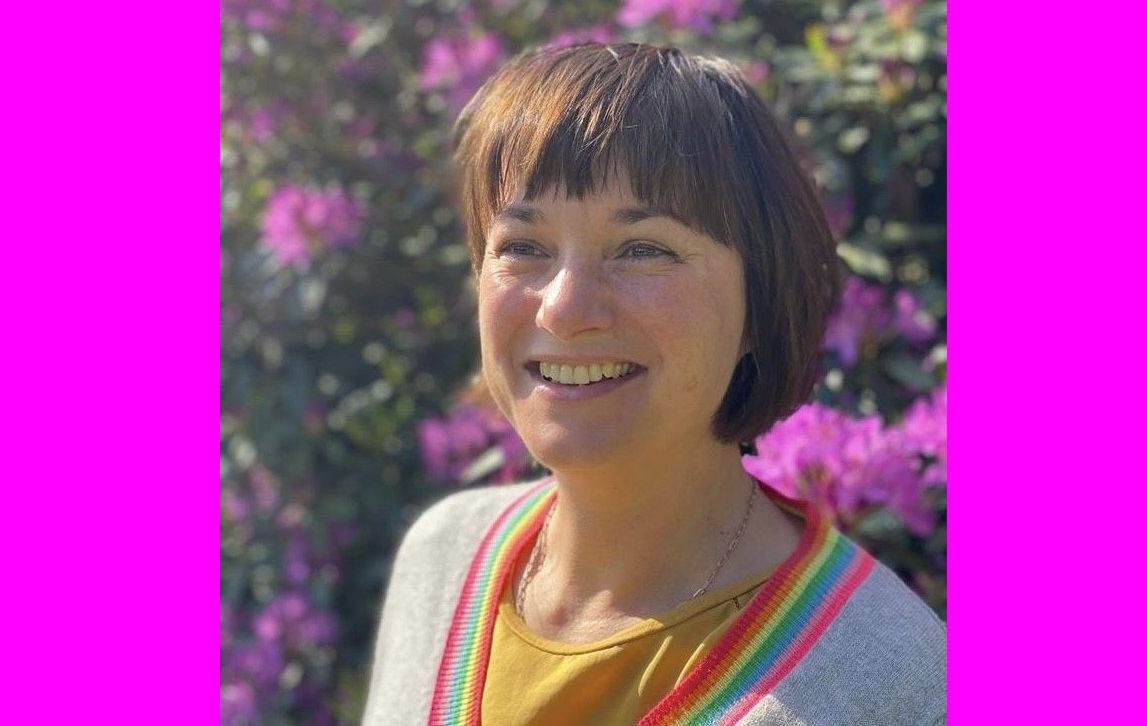
A matchmaker for dots of art
Q&A with Rita Kálmán, Hungarian-born art curator, art historian, and founder of the curatorial residency programme Dot.To.Dot
It may well be that the two main lessons taught to us by the times we live in are, firstly, physical affirmation of the well-known phrase “less is more”, and secondly, realisation that creativity is the key to progress in all circumstances. One such small yet influential initiative is the curator-in-residence programme Dot.To.Dot launched by Hungarian-born curator and art historian Rita Kálmán shortly before the start of the pandemic. Using her apartment in Budapest as a physical launching pad (which had been standing empty as Rita herself is currently living between Vienna and London), she has created a nerve centre that builds and rebuilds the bridges that have been torn down by the current political reality between the international and the Hungarian art scenes. In fact, she is now doing on her own what whole institutional structures usually do, thereby proving that having an idea, believing in it, and then having the daring to implement it are the keys to the genesis of most everything. One of Dot.To.Dot’s successes is the participation of Hungary’s OFF-Biennale in the 2022 edition of documenta.
Rita Kálmán was once the curator and programme supervisor of the now-defunct ACAX | Agency for Contemporary Art Exchange, which had been operating as a department of the Ludwig Museum – Museum of Contemporary Art in Budapest. She has curated numerous exhibitions and contemporary art projects as well as interventions in the urban environment, both in Hungary and other European countries, and currently works as a freelance curator. We met in Vienna, where Kálmán was one of the co-curators of the exhibition Sensory Tales at the Krinzinger Gallery project space Krinzinger Schottenfeld.
Exhibition view - Sensory Tales, Krinzinger Schottenfeld, Vienna, 2022. Photo: Galerie Krinzinger
The curatorial residency programme Dot.To.Dot, which was launched (and has even flourished) during the complicated world currents and undercurrents we have all experienced during the last few years, is a very small, very private, but also very successful initiative. How did it all start?
From 2008–2012 I worked at the international department of Ludwig Museum in Budapest, called ACAX | Agency for Contemporary Art Exchange whose main goal was to focus on building up new international connections between the Hungarian art scene and the international art world. In this context we organised residencies and visitor programmes, and invited international curators. Our main target was to invite curators who had recently been announced as the curators of an upcoming biennial or big international art exhibition to a research trip to Hungary. As an idea, it was nothing new because there already were institutions successfully focusing on these types of activities and boosting the visibility of a specific country’s art scene in a bigger international context – for example, in the Scandinavian countries and the Netherlands.
In our case, it was a very small department – just the two of us, me and my colleague, Tijana Stepanovic. We also curated exhibitions and participated in larger cooperative international art events such as EU-funded art projects. So, this was all part of the, let’s say, big plan of establishing new connections and making it possible for Hungarian artists to be more present abroad.
documenta fifteen: OFF-Biennale Budapest with On the Same Page - OFF-Editorial Practice, book launch, documenta Halle, Kassel, July 9, 2022. Photo: Nicolas Wefers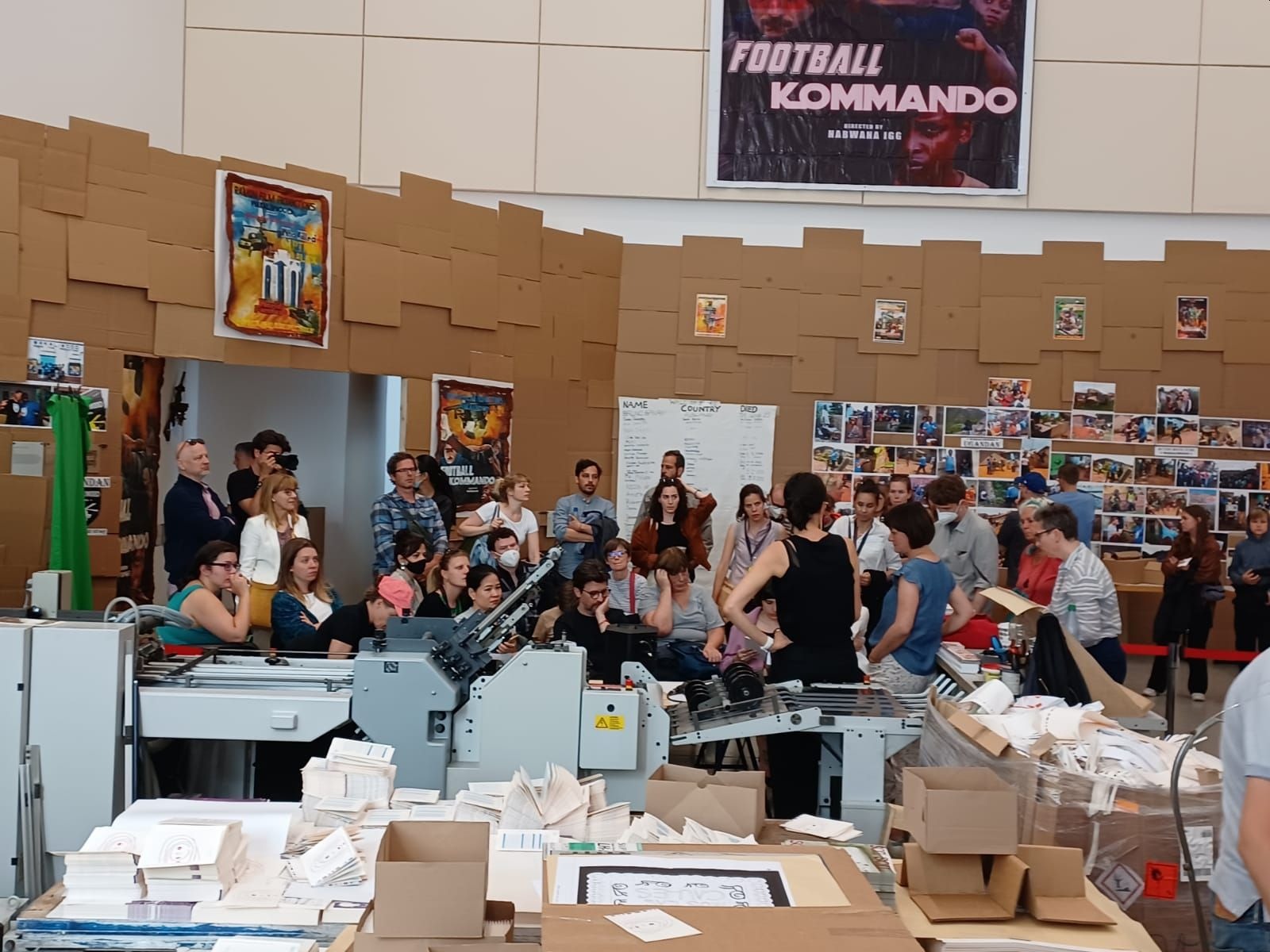
To give a concrete example, we invited the curators of the 2011 Istanbul Biennial (Adriano Pedrosa and Jens Hoffmann); they were really interested in the views of artists who were active in the 1960s and 70s. So, among others we organised a studio visit with Dóra Maurer, and they selected Dóra for a solo exhibition. From our side, we prepared and organized her contribution and provided all the funds for framing her works and for transport because the Istanbul Biennial said that they really would like to exhibit Dóra, but unfortunately did not have the funds for it. This type of structure had been completely missing in Hungary, and within a couple of years we racked up many success stories.
But then, with the right-wing government and Viktor Orbán becoming Prime Minister, the whole political climate changed. Politics also started to get involved in the decision making of who is to become the director of certain institutions – museums, universities and so on. They kind of wanted to take control over all fields of life and society. And when the contract of the then-director of the Ludwig Museum [Barnabás Bencsik – Ed.] expired, it was made clear that he should not reapply for the position. So, without announcing the position open for applicants, they simply appointed someone who was in favour of the governing party and Viktor Orbán’s regime. With the change of the political climate and a very strong shift to a more nationalist and introverted type of politics, programmes like ours were declared outdated, there was simply no funding provided for these types of activities. And if you don’t work on your network, if you are no longer present internationally, then the interest that you have managed to create over a couple of years is going to wane and you become invisible, in a sense. Personally, this made me feel very sad because years of my professional life had been invested in this programme, and then it vanished very quickly.
However, this situation became a kind of starting point for my own idea. In 2019 I read the announcement about the curators appointed for documenta fifteeen (2022) – the Jakarta-based artist collective ruangrupa, and I realised that I knew one of its members from many years ago. It became obvious to me that I simply must invite him to visit Hungary. But instead of just writing him an email, I thought – Why not setting up a small project, a curatorial residency programme? – and continue the work that I had started under the Ludwig Museum. This is how the Dot.To.Dot programme was born, it’s all based on my own initiative and I also finance it by myself. Of course, it’s very small because I just started setting it up. I use my own flat for it since I live abroad but still have my old apartment in Budapest.
I invite international curators and art professionals to Hungary, and they stay in my flat. It’s a very personal and different approach and level than before, you know – instead of the Ludwig Museum inviting and hosting, now I’m doing all of that as an independent curator and art professional. Also, it’s not just biennial curators or the currently top curators of the art scene that I’m interested in. I am more interested in longer-term relationships and inviting people who are somehow like-minded and give me the impression that they would really benefit from spending some time in Hungary, and the Hungarian art scene would also mutually benefit a lot. For example, my last guests were the two founders of the Romanian art newspaper called Kajet. They had been in touch with some people from Hungary but had never been to our country. So, I told them, why don’t you come and meet people face to face instead of just over Zoom and email? I usually invite people to stay for at least a week, seven to ten days, as I believe this is an ideal time frame for a deeper understanding of the local art scene and its driving forces.
What I’m doing now is a slower process than how we worked at the Ludwig Museum – generally we invited guests for a shorter time, curators never had more than four days to spend in the city. I think that when you have time to stay and focus on a certain environment for – let’s say, a week – it’s so much more meaningful than just travelling from one place to another, and a month later, you don’t even remember what you saw in Budapest.
Getting back to documenta and ruangrupa, what actually happened was a bit unexpected – it was not the person I knew but Farid Rakun, another member of the group, who ended up coming to Budapest, and he had a wonderful time, I think. Shortly after his visit, he contacted me and said that they officially want to invite OFF-Biennale Budapest to become one of the core lumbung members and participants at documenta 2022. That was a success on a scale that I never imagined would happen.
My programme is very low budget at the moment but obviously, the OFF-Biennale invitation to documenta made it very clear to me that you don’t need much to enable situations like this one – you don’t have to be a big institution or a very serious and very well-functioning museum. Things like this can happen on a very informal and small scale as well.
Farid Rakun in discussion with the OFF-Biennale team and participants of the 2021 edition, Budapest, 2019. Photo: Barnabás Neogrády-Kiss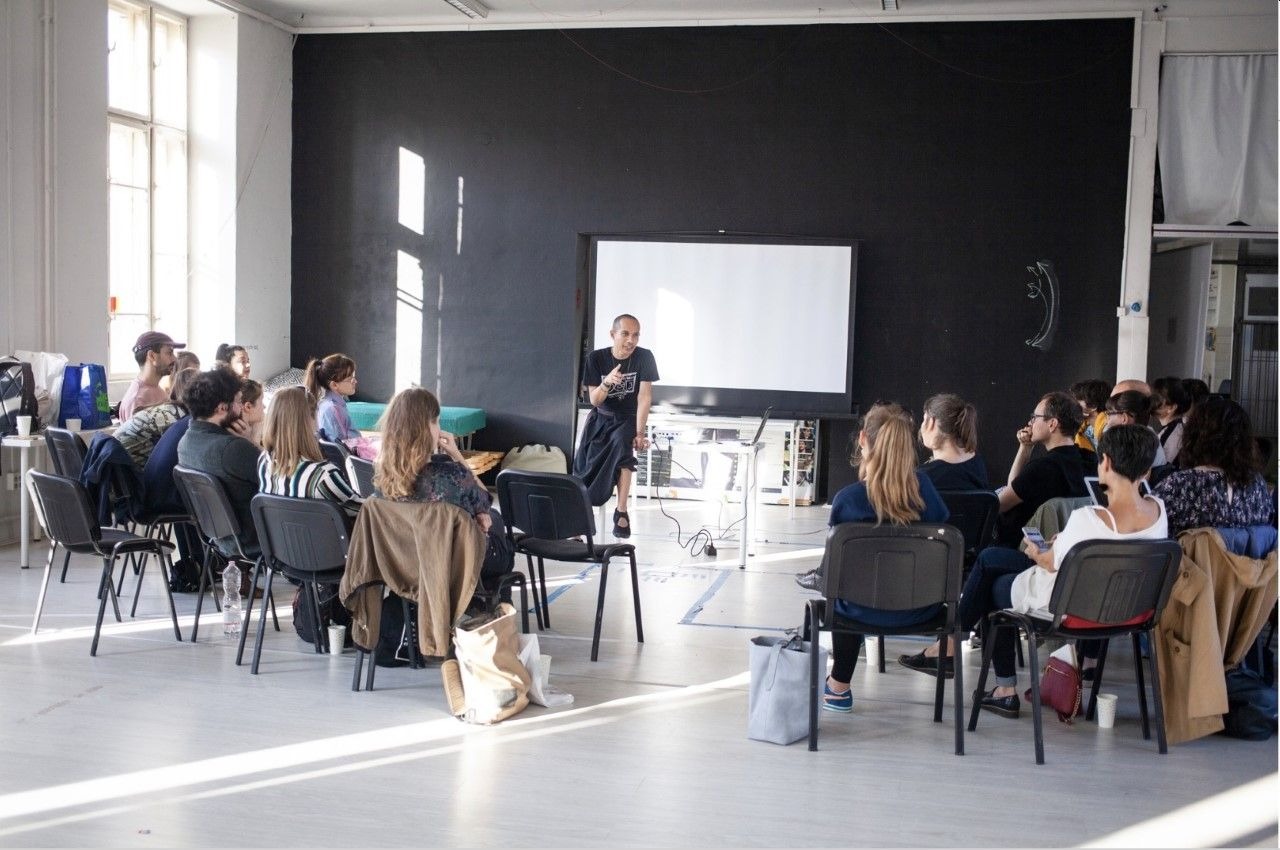
How many curators have you hosted since then?
Well, so far I’ve had three guests. I started in autumn 2019, and then the pandemic hit. The last two and a half years weren’t exactly the right time for travelling much. My next guest will come in March 2023 and I really hope that things will now become more stable. My original plan (and which I have the budget for right now) was maybe six to eight people per year, which is already quite a lot.
Could you elaborate a bit on the programmes you design for them?
I always organise a tailor-made programme for the guests. It is not just an average overview, as they arrive in Budapest and then we go to various exhibitions, art museums, some artist studios, etc. The programme is focused on the interests and research topics of the specific guest. I have at least one or even more preliminary discussions with my guests during which I try to really understand what they are searching for. Based on these insights I organise meetings – not only visiting artist studios and seeing portfolios, but also meeting other curators and art writers, visiting interesting archives, and sometimes meeting people from other fields such as musicians, social workers, etc. I always try to give a comprehensive overview within one field, you could say.
documenta fifteen: OFF-Biennale Budapest, Tamás Péli, Birth [Születés], 1983, Daniel Backer, Shadow Diagram, 2022, installation view, Fridericianum, Kassel, June 14, 2022. Poto: Nicolas Wefers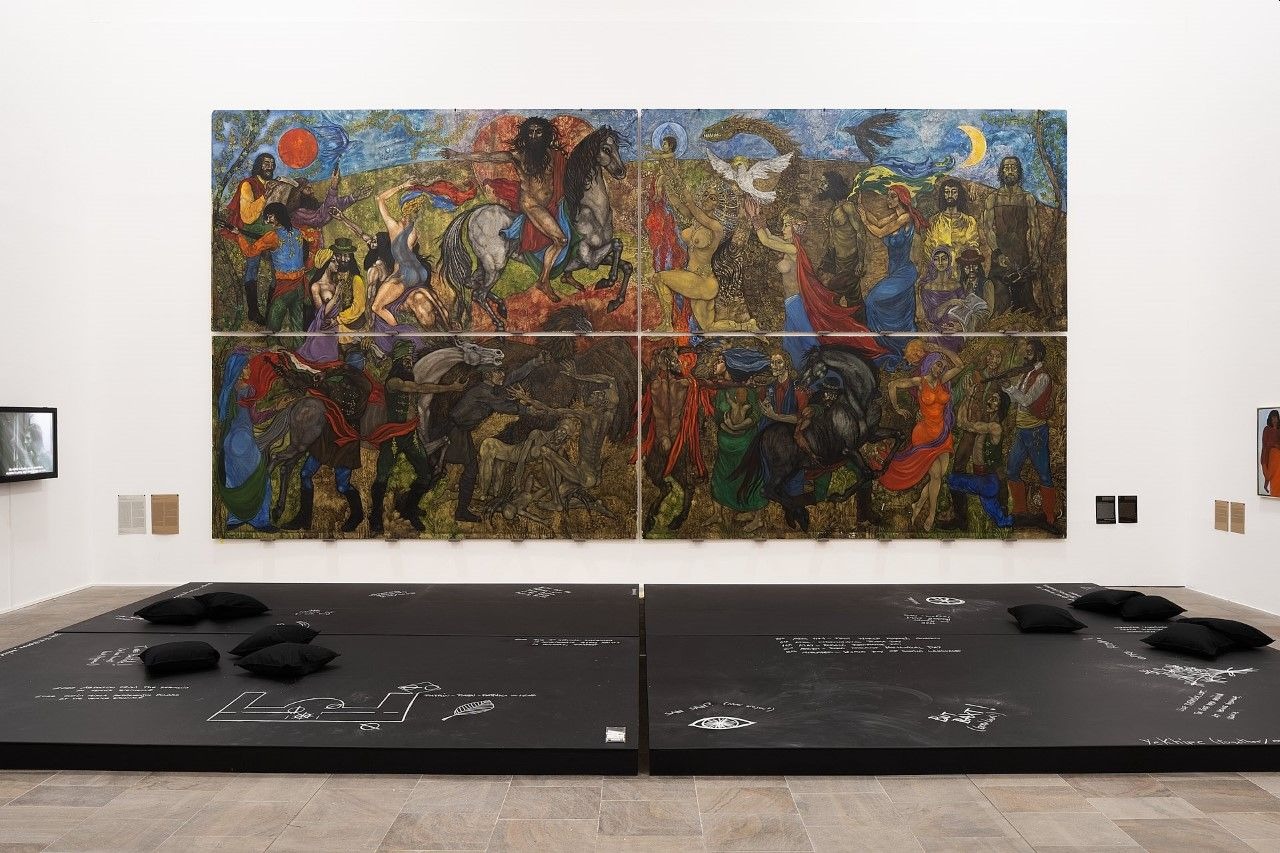
Does the process always begin with an invitation from your side? Is it possible to send a request or application?
It is invitation-only. After the visit I always have a review and feedback meeting with the guests, and I ask them to suggest like-minded people I could invite.
Especially right now, considering the highly challenging Hungarian political and economic situation as well as its impact on the cultural scene, I am not sure if a run-of-the-mill curator would be the best fit for coming to Budapest. Maybe I am being a bit pessimistic in how I see the Hungarian arts nowadays, but I think every art scene has a special kind of “sex appeal”. If you find the right people who resonate very well within the set-up and with the vibe that we have here, it can be very fruitful. You could call me a kind of “matchmaker”.
On the Same Page - OFF-Editorial Practice, book launch at documenta fifteen, documenta Halle, Kassel, July 9, 2022. Photo: Katarina Sevic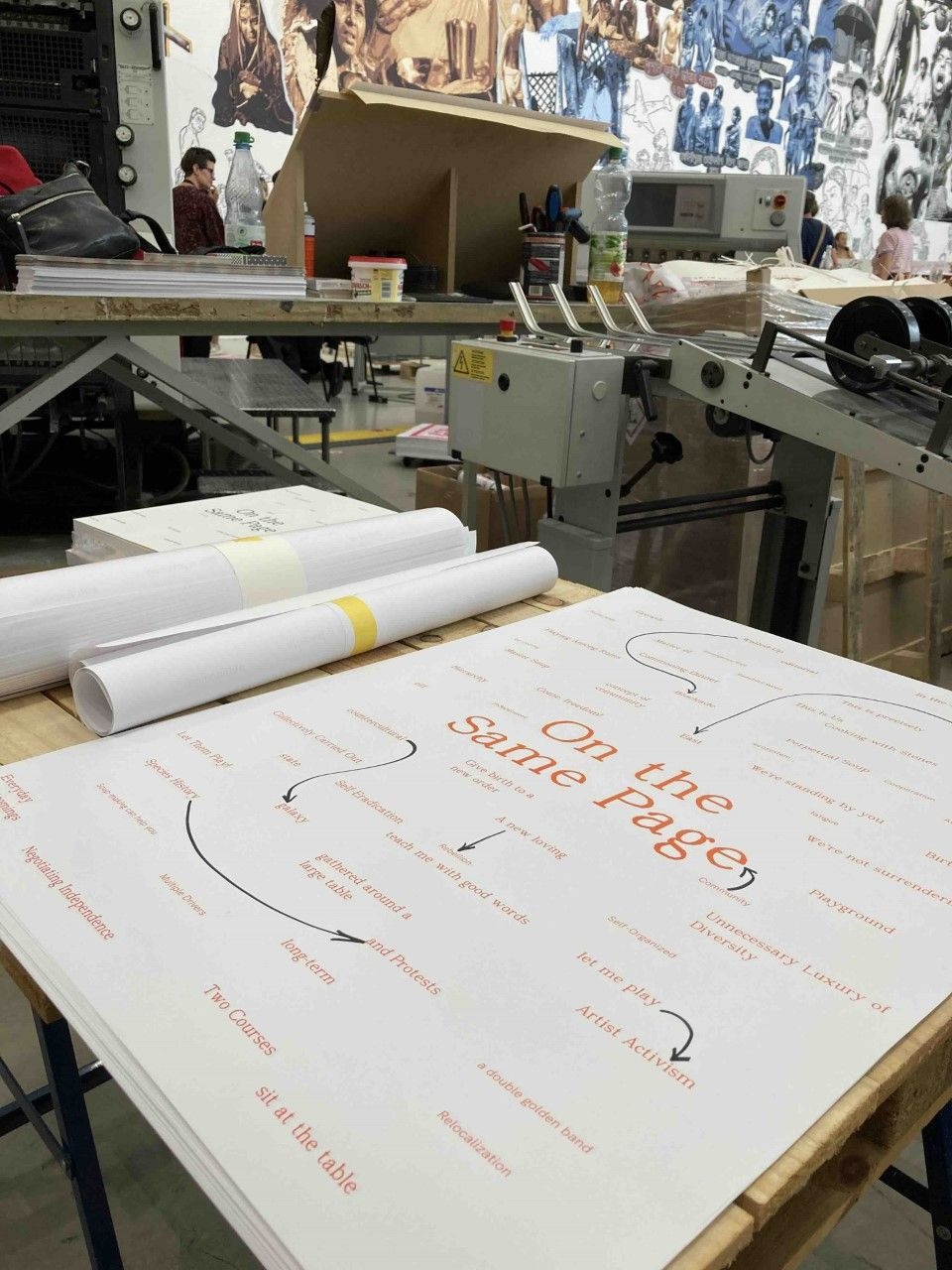
Has this initiative changed or left a mark on your approach as a curator?
I think I was never interested in becoming a classical curator, as in doing one exhibition after another in a white cube exhibition space. I’ve always been more interested in finding alternative approaches of curating and testing inspiring formats. For example, my latest project is a book that I co-edited with Katarina Šević and Lívia Páldi. We just published it in cooperation with OFF-Biennale – it is a kind of investigation of the independent art scene in Hungary. We invited Budapest-based cultural workers who were involved in the last OFF-Biennale (2021) to write an article or send in an artwork or contribute in some other form to the broader topic. It is a kind of statement about how current things are in Hungary’s independent art scene. And I would say, for me as a curator, this is as much of a curated project as an exhibition. For me, these types of projects are much more challenging.
If one looks at the Central and Eastern European art scenes – the themes artists are working on and discussing, their methods of expression – do you sense any differences as compared to the art scenes of “Old Europe” – and the international art scene in general?
There are these great big stories about the international art scene being interested in specific topics at certain times. And the artists from Central or Eastern Europe who would like to position themselves on an international platform try to somehow connect to these topics. Because this is the key to being understood. You know, I always have the impression that during these visitor programmes which I have been organising, if I show an artist who is dealing with a topic that is really interesting but very focused on local conditions, it is very complicated to make it accessible or create a context for an international person. Because having to explain so many things is just exhausting for most people.
But obviously, there are a lot of Hungarian artists or artists from the region who are not all that keen on playing on an international level. They just do their own thing, and they may even be successfully selling their artworks to the local audience. There are a lot of painters and sculptors who are doing very well with selling their work, but it’s definitely not interesting from an international perspective. I think the question is always: Who is the audience? With whom do you want to set up a connection, or who is your discussion partner?
documenta fifteen: OFF-Biennale Budapest, Recetas Urbanas, Jumping in Hanoi (The Everything Bridge) with visitors, Bootsverleih Ahoi, Kassel, June 19, 2022. Photo: Nils Klinger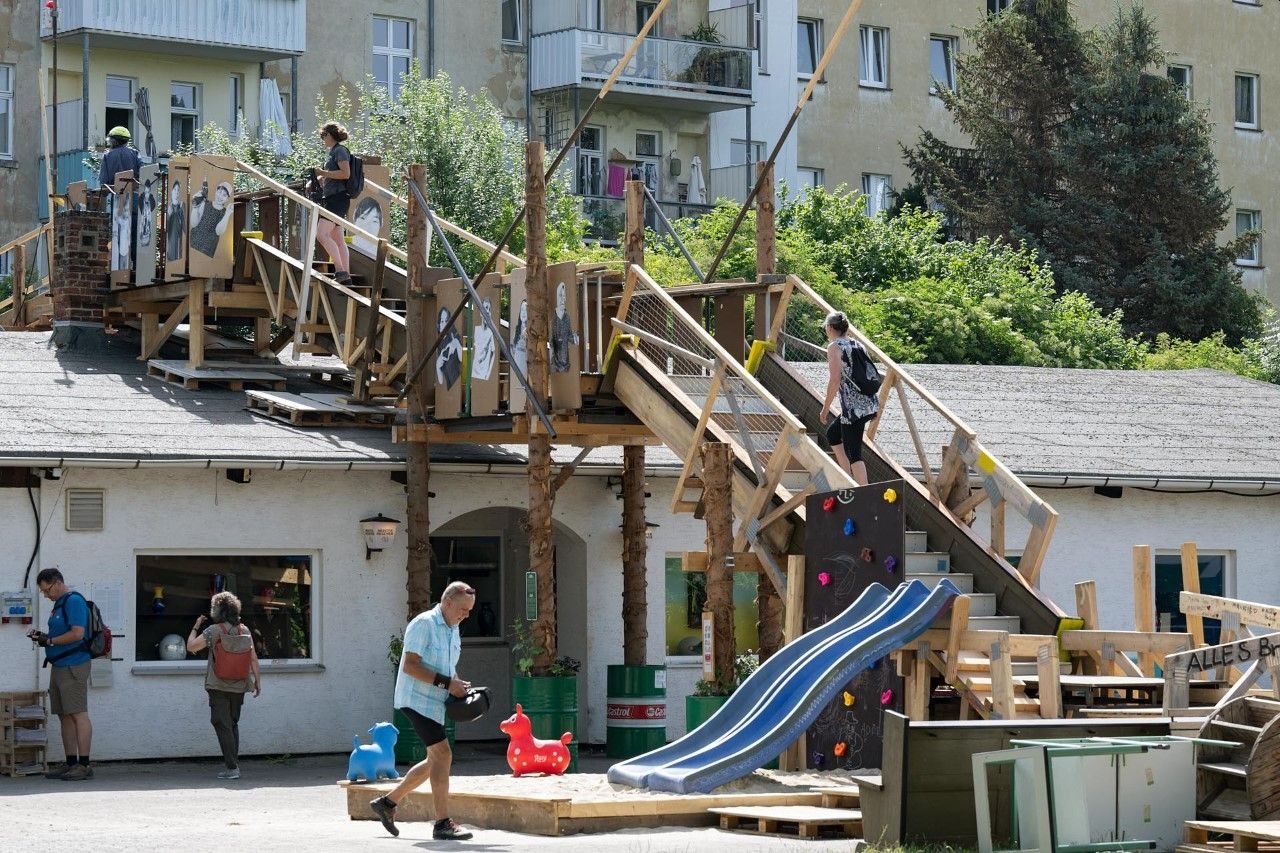
How do you see the role of commercial galleries in the socio-economic fabric of the local art scene in countries like Hungary and elsewhere where the political climate has turned restrictive?
In order to exert control, the state has cut funds to a minimum and is no longer supporting independent cultural initiatives, that’s why increasingly less and less is happening in the non-profit arts scene and the power structure has moved more towards the commercial side. Due to the financial independence of the commercial art scene, it can provide a flourishing background for interesting art projects; it’s just a question of the will of the galleries to support a certain artist or the creation of a certain artwork.
There’s also a new crop of collectors from the younger generation who are buying contemporary art, and the galleries have benefited from this fresh new money. In Hungary right now, from my point of view, there are not many – maybe three or four galleries – who have been working with interesting artists on a high professional level right now.
Are they trying to bring these new artists onto the international scene?
Well, it’s an interesting situation because due to the increased interest for regional art from the 1960s, 70s and lately, the 1980s, commercial galleries have earned quite a lot of money by selling works from these periods and they haven’t been focusing much on younger artists. However, I recently spoke with some of them, and they all said they believe that now is really the time to focus on a younger generation of artists and to start pushing them internationally. You must work with these artists as well since there are very few rising stars who could reasonably build up a career by themselves. They need the support of the galleries and of course of the whole scene, in some form. I have the impression that some of these gallerists now feel that they need to take the initiative and turn to younger artists. It is their responsibility, in a way, to give back; I believe right now there is a momentum in terms of understanding this.
Wrapping it up, it is clear that despite the turbulent time of global instability that we find ourselves in right now – the pandemic, the war, budget cuts, the energy crisis, etc. – if you do your own small thing to make things better, and you do it creatively and bravely enough, you really can move things forward.
This is absolutely my motto. People sometimes over-complicate things – they think you can only make meaningful things if you are part of a big, influential structure that functions professionally and only then will people take you seriously and so on. But I don’t believe that’s necessary, especially not in the regional art scene, which is often in a troublesome position. You can’t wait for “things to get better” because that kind of institutional background and support is simply not available right now. You must start and work on your own initiatives because small changes are better than no change at all.